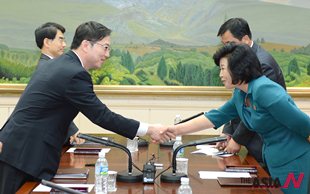Seoul has submitted a claim to the United Nations to extend a portion of its continental shelf toward Japan, clarifying its stance over boundary limitation in the resource-rich East China Sea.
The claim was submitted to the U.N. Commission on the Limits of the Continental Shelf (CLCS) in New York, Wednesday. It is based on what Seoul sees as the “natural prolongation” of the shelf, the foreign ministry said.
The sea is the stage for complex debates over maritime boundary delimitation among Korea, China and Japan.
According to the U.N. Convention of the Law of the Sea (UNCLOS), coastal nations are allowed to claim exclusive economic zones (EEZ) that extend up to 200 nautical miles. In the narrow East China Sea, this has prompted overlapping claims.
Countries are required to submit documents delineating their outer continental shelf as part of the process.
Under the conventions, states can use two methods to delineate the outer limit of their continental shelf. They can put the boundary where the thickness of sediment on the seafloor is at least 1 percent of the distance to the foot of the slope (FOS); or 60 nautical miles beyond the FOS.
“After close consultation of ministries concerned and experts on marine science and international law, we’ve drawn the outer limit line for the trough by using the formula of placing the boundary 60 nautical miles beyond the foot of the slope within 350 nautical miles from the territorial sea in accordance with the U.N. convention,” foreign ministry spokesman Cho Tai-young said in a statement.
“Compared to our 2009 preliminary report, it is extended up to 125 kilometers toward Japan, some five nautical miles away from the Japanese sea border,” another official said.
This nearly doubles the size of the shelf claimed by Korea in an earlier claim.
The basin in question holds implications for three countries given their overlapping EEZs. China and Japan, still locked in a rancorous debate over an archipelago in the sea, both lay claim to the trough.
Seoul’s claim overlaps with Beijing’s but the two countries share similar views on defining the limits. China says the trough shows that its continental shelf and that of Japan are not connected, while Tokyo says the feature should be ignored.
While dispute settlement methods exist through the international community, the three countries generally prefer to discuss such issues through bilateral contact.
The CLCS issues “recommendations” after reviewing such material, but they are not legally binding.
“In case of disputes among countries involved, the CLCS is supposed to refrain from reviewing the case. So the final demarcation will be made through agreements by the three parties,” an official said. <The Korea Times/Kim Young-jin>




